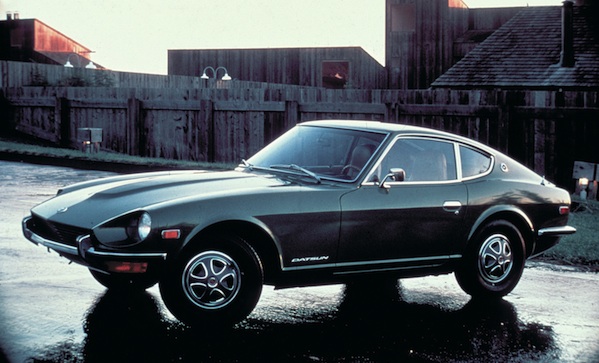When Nissan recently announced the return of the Datsun nameplate, many folks under the age of thirty were surprised at all the hubbub from the enthusiast community. Datsun? The guys who made cars entirely out of rust particles? What’s to get excited about?
Glancing back over the history of the company kinda reinforces the bewilderment; the first Datsuns in North America were basically just copies of the Austin A50 Cambridge, a modestly-powered sedan with the accelerative powers of a gastropod and the crashworthiness of a first-grader’s origami. The motoring press of the time collectively shrugged, Road & Track calling the performance, “Melancholy.” Oh dear.
Still, Datsun persevered, and over the next quarter-century would produce some of the most iconic machines to ever come out of the land of the rising sun. Here are our favourites.
The 240Z
Let’s kick off with the one Datsun even non-gearheads can instantly recognize: the Zee. Or Zed. Just not Zzz.
Taking its genesis from the two-seater Fairlady roadster, the Z had quite a protracted birth. Nissan execs were mostly interested in trying to beat chief rival Toyota at the volume game, and wanted to crank out squadrons of fuel-sipping penalty boxes. Nissan USA president Yutaka Katayama, basically exiled to the States for being too interested in motor racing (highly unseemly for a Japanese businessman at the time), had fallen in love with Californian car culture and was convinced that a Datsun-badged GT car would sell like hotcakes.
Secret meetings behind the board’s back, engineers resurrecting a Yamaha-based prototype, and near-daily calls to Japan got the 240Z built despite the conservative nature of the Nissan higher-ups. When the sheets came off in 1970, it was obviously the right call. Still dubbed the Fairlady in home-market Japan, the first 240Zs were specially powered for the North American market with a decent-for-the-time 151hp straight-six. With gorgeous lines and crisp handling, it was a revolution.
The 510
Launched shortly before the Z took the world by storm, the boxy little Bluebird sedan (as it was known outside North America) did not really look much of a performance machine. Granted, it was a little better looking than previous Datsun efforts, but on the face of things, here we went again with another rust-prone econobox. Well, sort of, except for the influence of that pesky, speed-obsessed Katayama.
“Mr. K.” as all Datsun buffs know him, pushed for both the clever engineering of the 510 and for its sprightly powerplant, a 1600cc four-banger that made the car a rival to 60’s BMWs. It was cheap, reliable, easily modified, and a hoot to drive. Almost overnight, the “poor man’s BMW” developed a strong following, aided by the well-publicized success of Peter Brock’s BRE-liveried red-and-blue racing team.
The Datsun Pickup
The two major sporting icons in the Datsun constellation are great, but it’s worth noting that neither would exist if not for the humble Datsun pickup. These were sold right from 1958 in North America, snapped up by gardeners, Japanese immigrants, and naval servicemen who’d been stationed in Japan and knew what they were.
While early Datsun sedans were more crappy than scrappy, the Pickup truck sold alongside them was tough as nails despite its tiny stature. You could haul all sorts of stuff with it, yet it burned fuel at a miserly rate and was so simple in construction that the average shade-tree mechanic could easily keep one running at minimal cost. It was the first proper Japanese truck sold in America, and even today battered examples can be found rolling around Californian roads with beds full of lawnmowers and leaf blowers.
————
Brendan McAleer is a freelance auto-writer based out of North Vancouver, BC, and a member of the Automotive Journalists Association of Canada. His work appears in BBCAutos, Road&Track, Autos.ca and elsewhere. Follow him on twitter @brendan_mcaleer.


